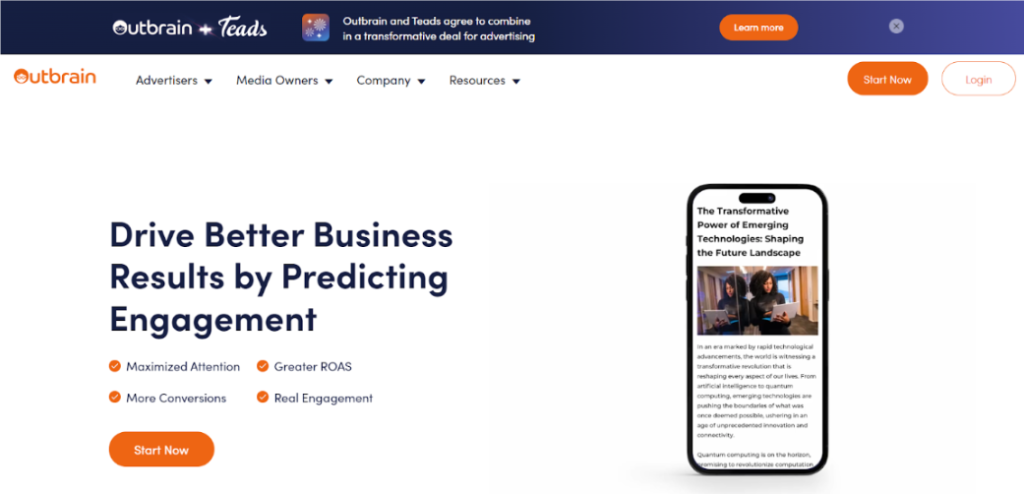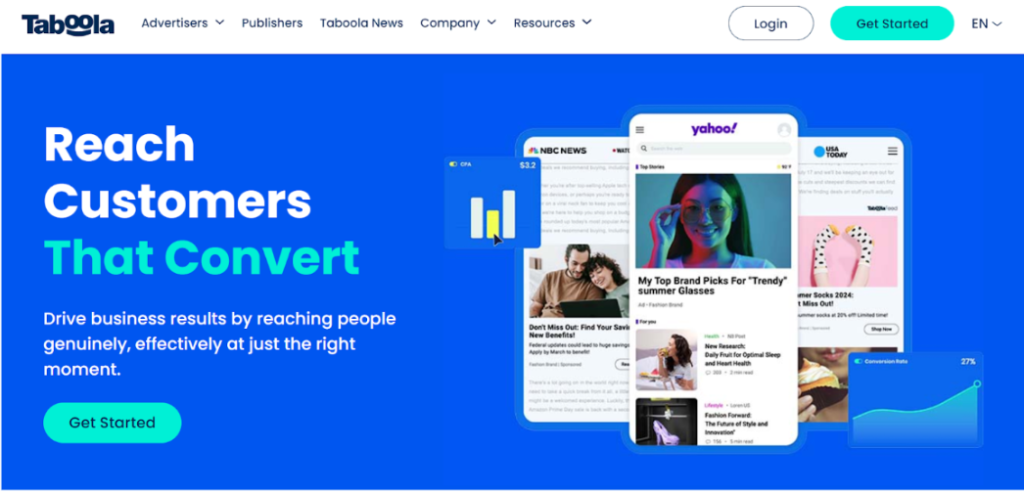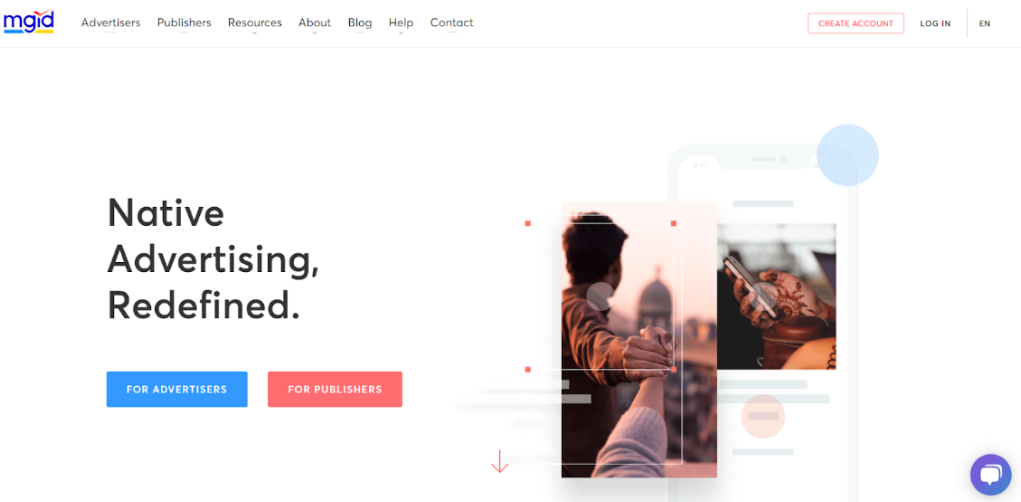Native advertising is revolutionizing eCommerce marketing in 2025, offering a powerful solution to boost conversion rates and drive sales.
By seamlessly integrating with platform content and targeting relevant audiences, native ads overcome ad fatigue and more effectively connect with potential customers than traditional display ads.
Native ads match the look and feel of their host platforms, creating a non-disruptive user experience. They significantly boost engagement and conversion rates for eCommerce businesses, help cut through digital noise and combat ad fatigue.
This article will explore how native ads work, their benefits for eCommerce, and best practices for successful implementation.
For eCommerce businesses seeking to thrive in today’s competitive digital landscape, native advertising presents a game-changing opportunity to enhance customer engagement and drive growth.
Understanding Native Ads In eCommerce
Native advertising in the eCommerce landscape offers a versatile approach to product promotion and brand awareness.
These ads can be tailored to specific product categories, target audiences, or individual user preferences, making them highly effective in diverse online retail environments.
Common types of native ads in eCommerce include:
1. Sponsored Product Listings
These ads appear alongside organic search results on eCommerce platforms, mimicking the look of regular product listings but labeled as sponsored content.
2. In-Feed Ads
Seamlessly integrated into content feeds on social media platforms or news sites, these ads match the form and function of surrounding posts while promoting eCommerce products or services.
3. Personalized Recommendations
Often appearing as “You May Also Like” or “Recommended for You” sections, these native ads leverage user data to suggest relevant products.
The benefits of native ads for eCommerce businesses are multifaceted:
- Increased Visibility: By blending with organic content, native ads can capture attention without feeling intrusive.
- Higher Engagement: The relevant, non-disruptive nature of native ads often leads to higher click-through and engagement rates.
- Improved Brand Awareness: Consistent exposure through native ads can enhance brand recognition and recall.
How Do Native Ads Work?
Native advertising operates on a complex ecosystem involving three key players: advertisers, publishers, and consumers.
Here’s a breakdown of how the system functions:
- Creation: eCommerce businesses create ad content that blends with publisher platforms.
- Distribution: Publishers offer ad space on their websites or apps.
- Mediation: Native ad networks connect advertisers with suitable publishers.
- Targeting: When users visit a site, the network analyzes their data to select relevant ads.
- Integration: The chosen ad is seamlessly placed within the publisher’s content.
- Interaction: Users engage with the native ad, potentially visiting the advertiser’s site.
- Analysis: Advanced tools track ad performance, enabling continuous optimization.
This streamlined process ensures native ads appear naturally within a user’s browsing experience, increasing the likelihood of engagement and conversion for eCommerce businesses.
Why Native Ads Drive eCommerce Conversions
Native ads have become a powerful driver of eCommerce conversions due to their unique ability to blend seamlessly with content while delivering targeted messaging.
Native advertising creates a compelling path to purchase for online shoppers by leveraging relevance, trust, and an enhanced user experience.
1. Relevance
Native ads excel at targeting shoppers based on their online behavior, search history, and demographic information. This precision targeting ensures that product recommendations and promotional content are highly relevant to each user.
For example, a shopper who has recently browsed running shoes might see native ads for complementary products like moisture-wicking socks or fitness trackers, increasing the likelihood of additional purchases.
2. Trust
Native ads can build trust with potential customers by appearing as organic content rather than overt advertisements.
This subtle approach feels less intrusive and more valuable to users, who are often more receptive to informative or helpful content than traditional hard-sell tactics.
As trust builds, shoppers are more likely to engage with the ad content and consider purchasing.
3. User Experience
Native ads enhance the overall user experience by providing valuable product information and recommendations at the right moment in the customer journey.
Instead of interrupting the browsing experience, native ads seamlessly integrate into the content flow, offering relevant suggestions to aid in the decision-making process. This smooth integration can lead to higher engagement rates and, ultimately, more conversions.
Best Native Ad Networks
When implementing native advertising campaigns, choosing the right network is crucial. Here are three top native ad networks that eCommerce businesses should consider:
| Feature | Outbrain | Taboola | MGID |
|---|---|---|---|
| Publisher Network | Large, premium publishers | Extensive, diverse network | Mid-sized, niche-focused |
| Targeting Options | Advanced, including interest-based | Sophisticated, with predictive technology | Contextual and behavioral |
| Ad Formats | Various, including in-feed | Multiple, including content widgets | Diverse, customizable formats |
| Minimum Budget | Higher entry point | Flexible, varies by campaign | Lower entry point, suitable for smaller businesses |
| Optimization Tools | AI-powered optimization | Predictive engine, A/B testing | Automatic optimization, A/B testing |
| Link | Here | Here | Here |
With that, let’s get to learn more about each of these networks.
1. Outbrain
Outbrain is a leading native advertising platform that partners with premium publishers worldwide.

It offers advanced targeting options, including interest targeting and lookalike audiences, making it ideal for eCommerce businesses looking to reach specific customer segments.
Outbrain’s vast network of high-quality websites ensures broad reach and brand safety for advertisers.
2. Taboola
Taboola is another major player in the native advertising space, known for its extensive publisher network and sophisticated targeting capabilities.

It offers a variety of ad formats, including in-feed ads and content recommendation widgets, which can be particularly effective for eCommerce product promotions. Taboola’s predictive engine helps optimize ad performance in real-time.
3. MGID
MGID specializes in native advertising solutions for various verticals, including eCommerce. It offers a blend of contextual and behavioral targeting options, allowing advertisers to reach highly specific audiences.

MGID’s platform includes features like automatic optimization and A/B testing tools, which can help eCommerce businesses refine their native ad strategies for maximum impact.
Best Practices For Native Ad Campaigns In eCommerce
Implementing effective native ad campaigns requires a strategic approach tailored to the unique dynamics of eCommerce.
By focusing on clear calls-to-action, high-quality visuals, optimized landing pages, and data-driven optimization, businesses can maximize the impact of their native advertising efforts and drive significant improvements in conversion rates.
1. Clear Calls To Action
Effective native ad campaigns in eCommerce rely heavily on compelling calls to action (CTAs). These CTAs should be clear, concise, and action-oriented, encouraging shoppers to take the next step in the purchase journey.
Example:
For example, instead of a generic “Click Here,” try more specific CTAs like “Shop Now,” “Get 20% Off,” or “Discover More Styles.” The language should create a sense of urgency or highlight the value proposition to motivate clicks and conversions.
It’s also important to ensure that CTAs are visually distinct within the native ad, using contrasting colors or button designs that draw the eye without disrupting the overall native feel of the ad.
A/B testing different CTA variations can help identify the most effective options for your specific audience and products.
2. High-Quality Product Images And Descriptions
Visual appeal is critical in the world of eCommerce. Native ads should feature high-quality, professional product images that showcase items in the best possible light.
For fashion or lifestyle products, consider using lifestyle imagery that helps potential customers envision the product in use. Multiple images or 360-degree views can provide a more comprehensive look at the product, increasing confidence in the purchase decision.
Accompanying these visuals should be concise yet detailed product descriptions. Focus on key features and benefits, using language that resonates with your target audience.
Highlight unique selling points, such as sustainable materials or exclusive designs, to differentiate your products from competitors. Remember, the goal is to provide enough information to pique interest and encourage click-throughs to your product pages.
3. Landing Page Optimization
The journey from native ad to conversion doesn’t end with a click. It’s crucial to create landing pages that align seamlessly with your native ad content, providing a cohesive and frictionless shopping experience.
The landing page should expand on the information presented in the ad, offering more details, additional product images, and clear pricing information.
Key elements of an optimized landing page include:
- Consistent messaging and visual design that matches the native ad
- Clear and prominent CTAs that guide the user toward purchase
- Mobile responsiveness to ensure a smooth experience across all devices
- Fast loading times to prevent user drop-off
- Trust signals such as customer reviews, security badges, and return policy information
Consider creating dedicated landing pages for specific native ad campaigns, allowing for more targeted messaging and a streamlined path to purchase.
4. Tracking And Optimization
The success of native ad campaigns in eCommerce hinges on continuous tracking and optimization. Key performance metrics to monitor include:
- Click-through rates (CTRs)
- Conversion rates
- Cost per acquisition (CPA)
- Return on ad spend (ROAS)
Utilize the analytics tools provided by your chosen native ad network, as well as your own eCommerce platform’s tracking capabilities, to gain a comprehensive view of campaign performance.
Pay attention to which ad variations, product categories, and targeting options yield the best results.
Based on this data, make data-driven adjustments to your campaigns. This might involve:
- Refining audience targeting parameters
- Adjusting bid strategies to optimize for ROAS
- Testing different ad creatives and CTAs
- Modifying landing pages to improve conversion rates
Remember that optimization is an ongoing process. Regularly review performance data and be prepared to make iterative improvements to maximize the effectiveness of your native ad campaigns.
Conclusion: Native Can Be Key For E-commerce Business Growth!
In conclusion, native advertising has emerged as a potent tool for eCommerce businesses seeking to boost conversion rates and drive growth in today’s competitive digital landscape.
By seamlessly integrating with user experiences and targeting relevant audiences, native ads effectively combat ad fatigue and forge meaningful connections with potential customers.
The benefits are clear: increased conversions, enhanced brand visibility, and improved customer experiences.
As consumer preferences evolve, native advertising stands out as a strategy aligned with these changes. By embracing native ads and implementing best practices, eCommerce businesses can develop a powerful mechanism for boosting conversions, building brand awareness, and achieving their goals.
- Shopify Pricing 2025: Which Plan Is The Best For You? - July 31, 2025
- How To Remove Powered By Shopify (2025 Guide) - July 31, 2025
- Temu vs Shein (2025) — Quality, Shipping & Pricing Differences - July 18, 2025

